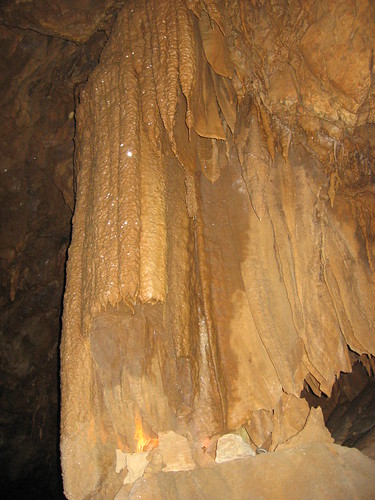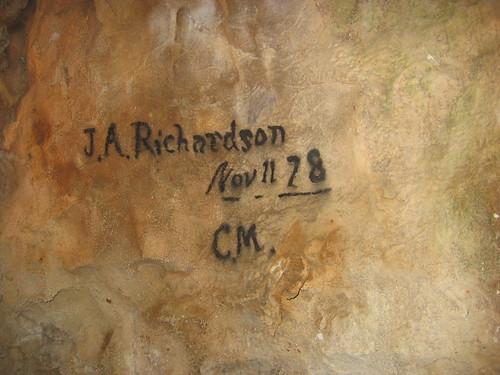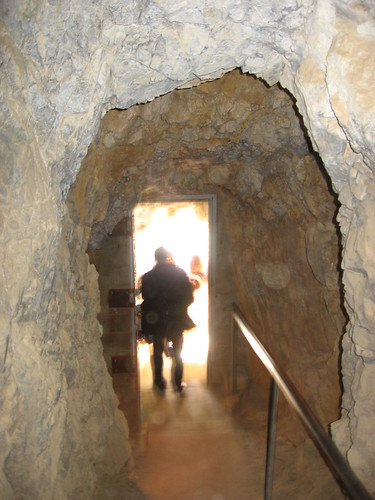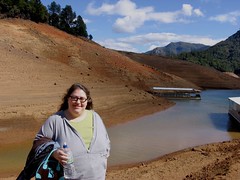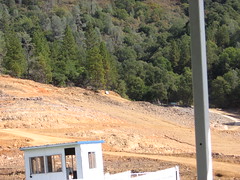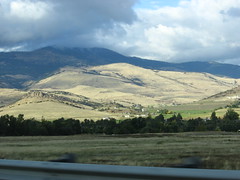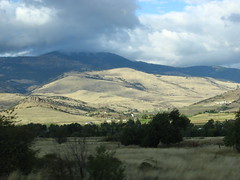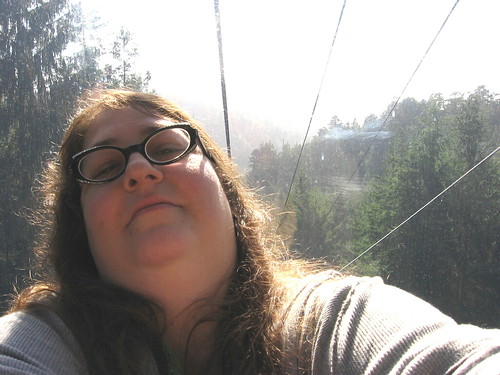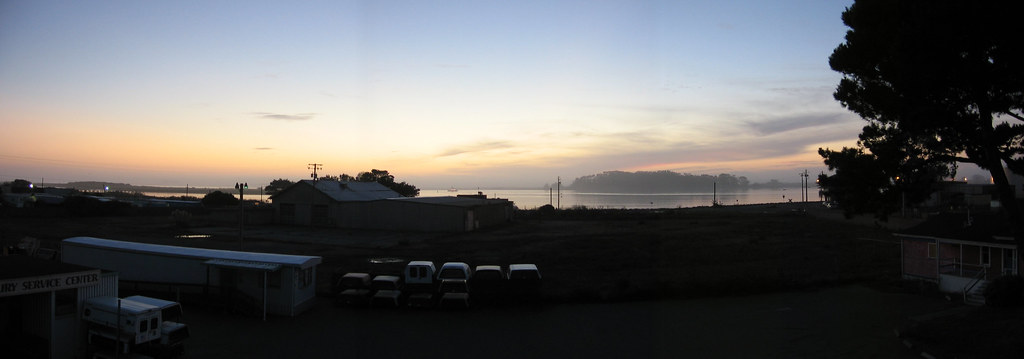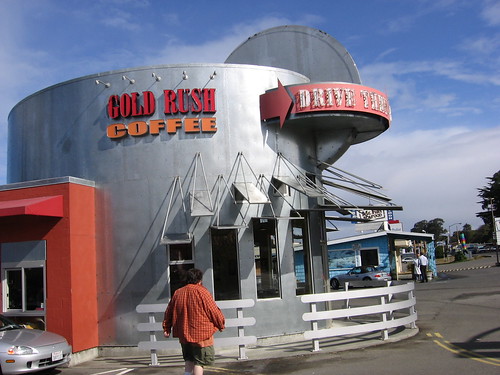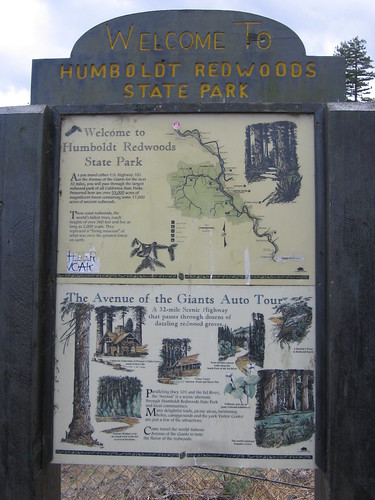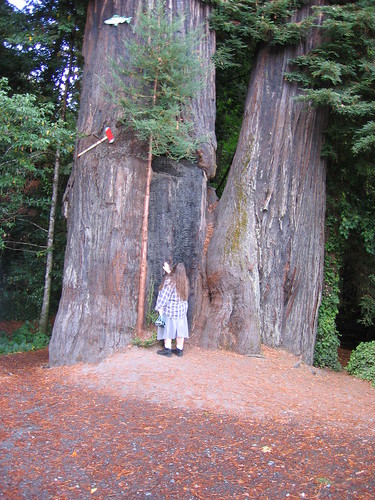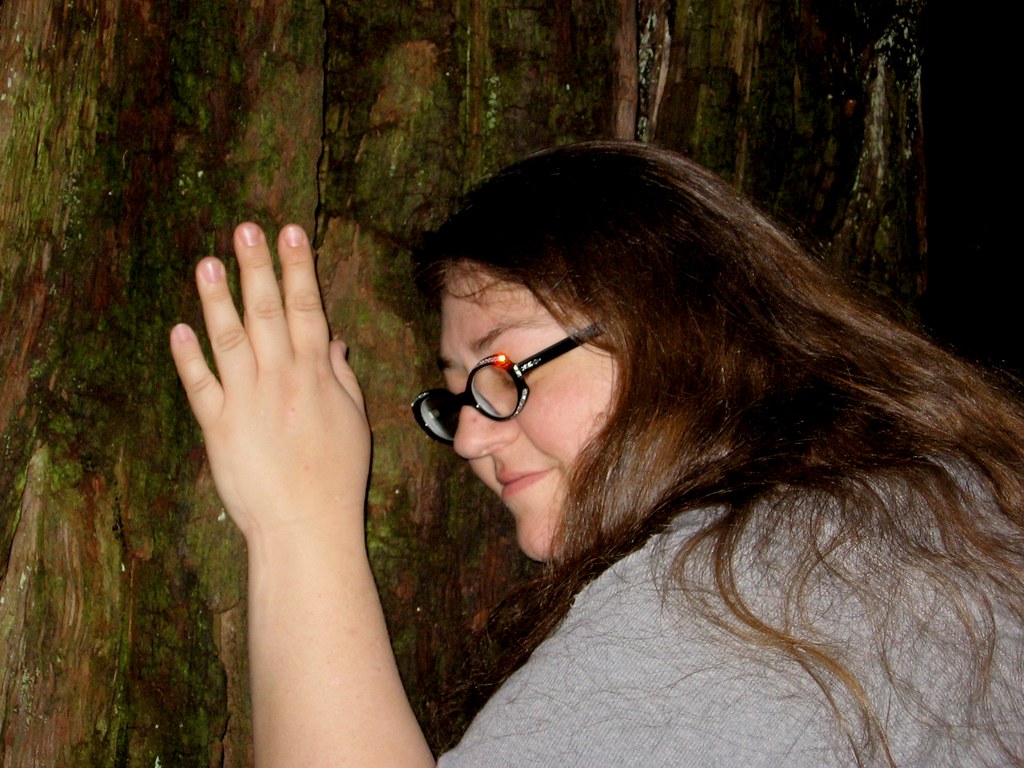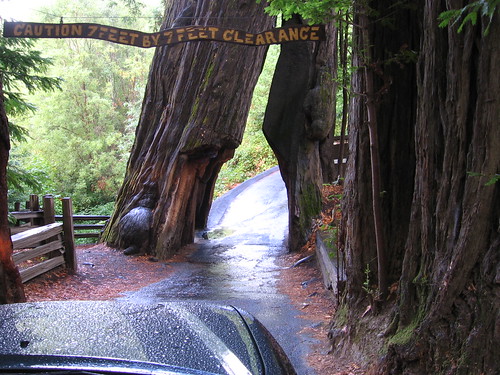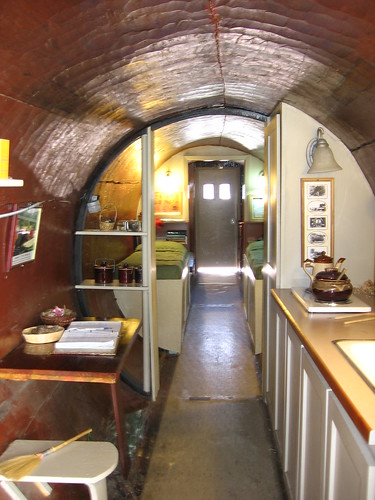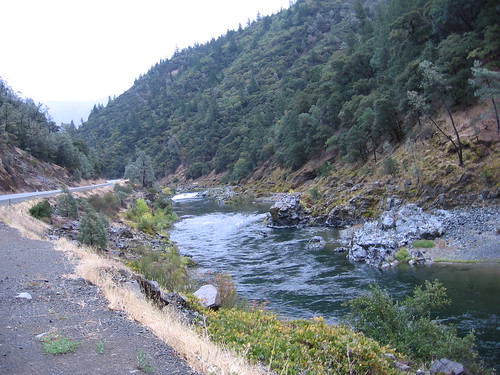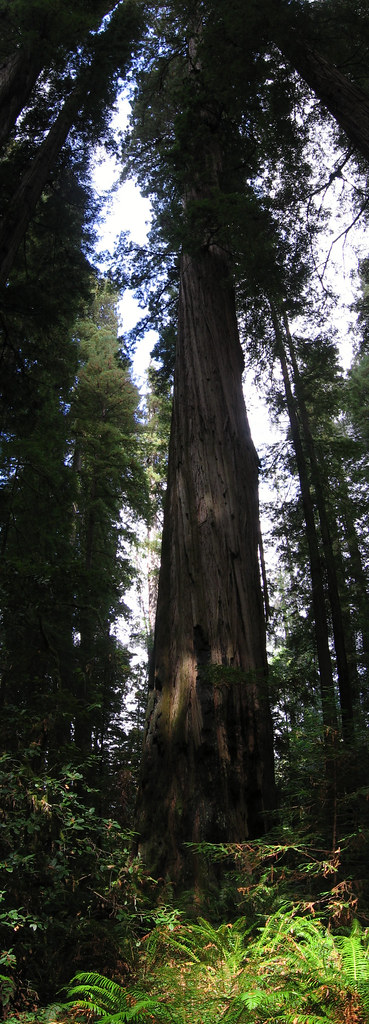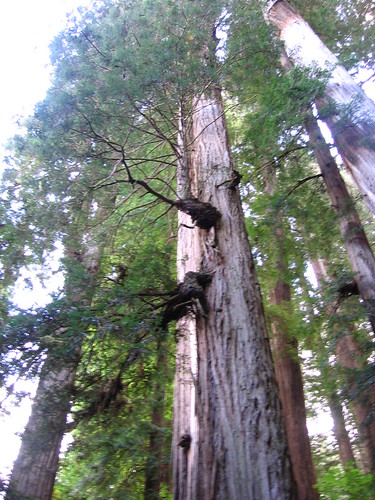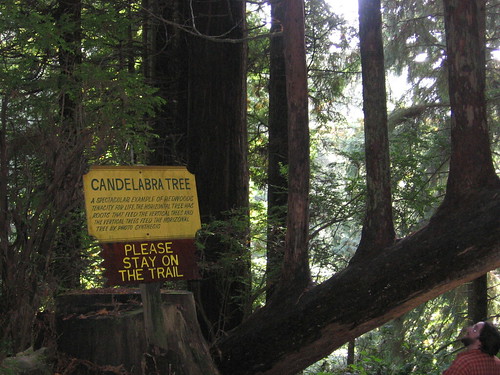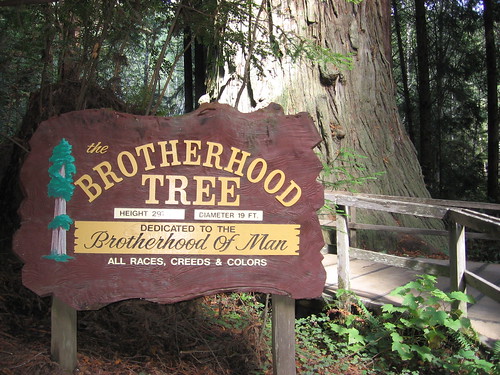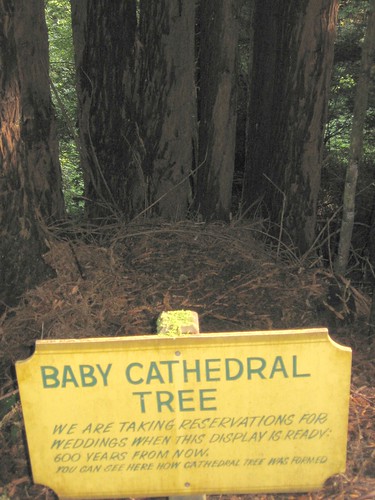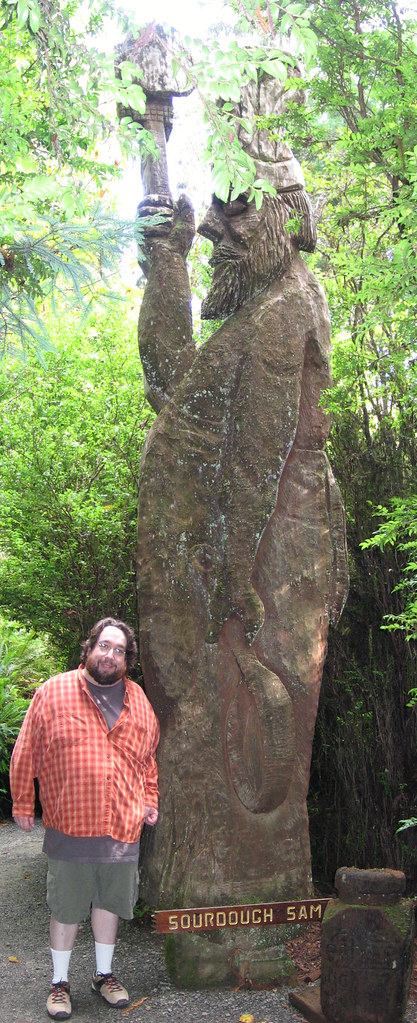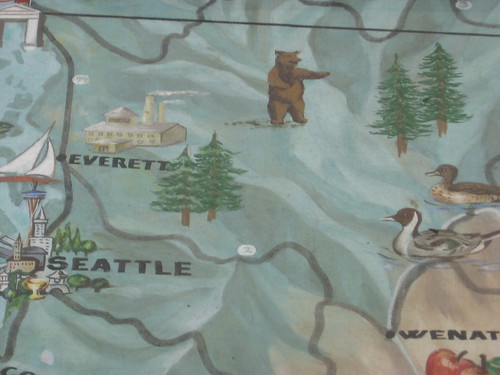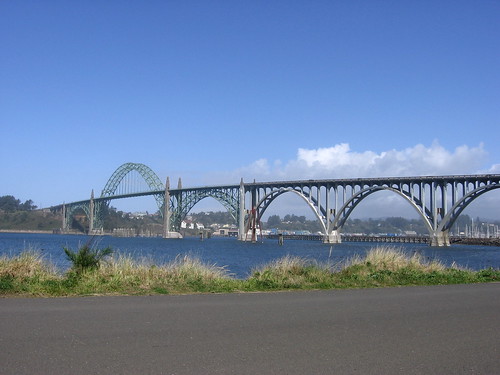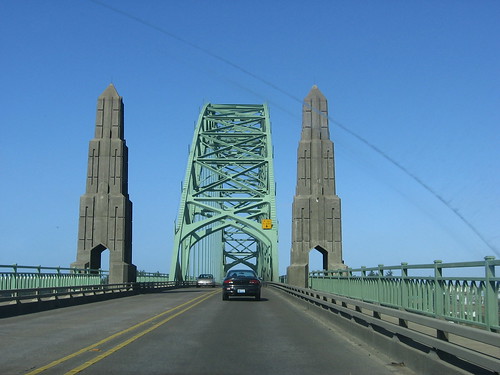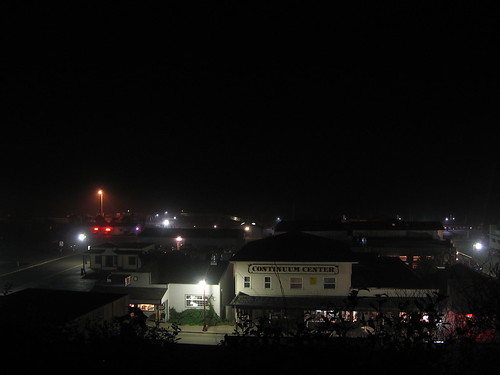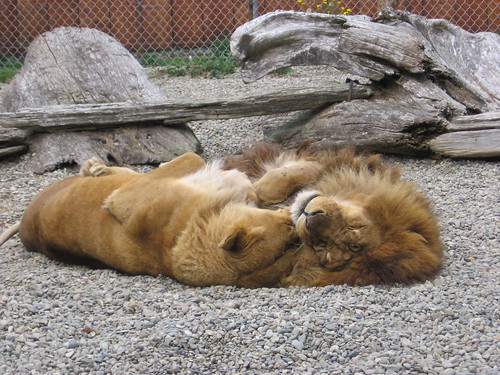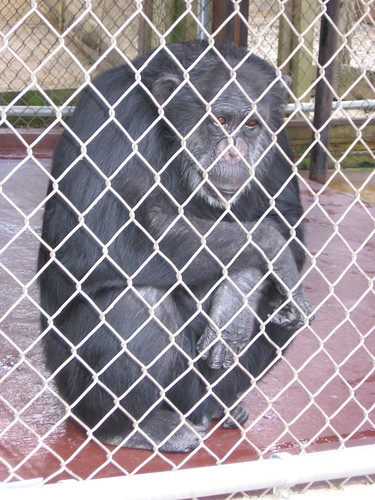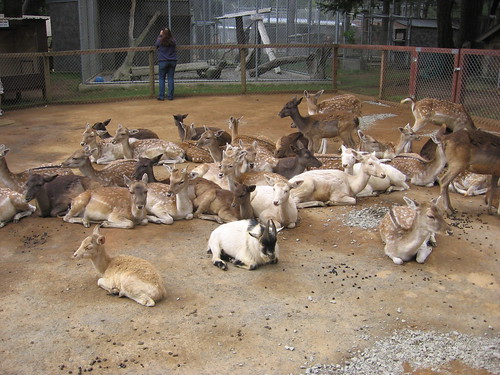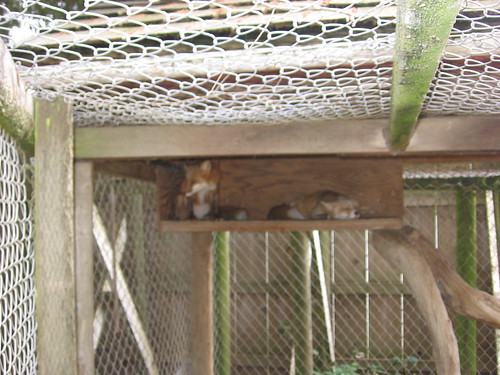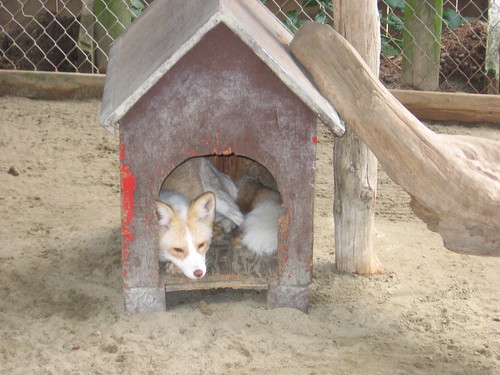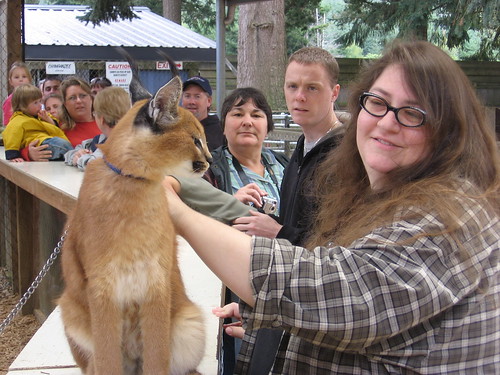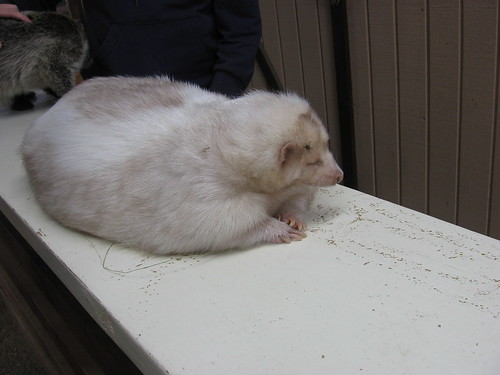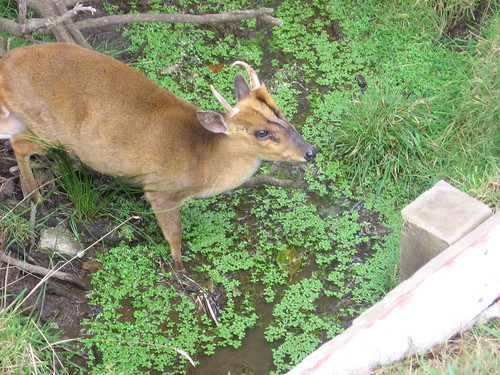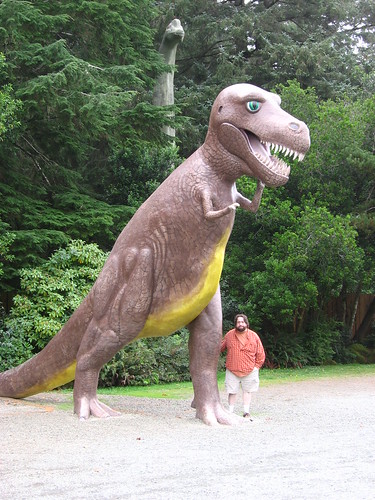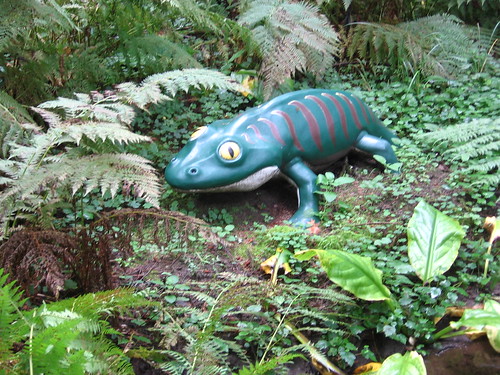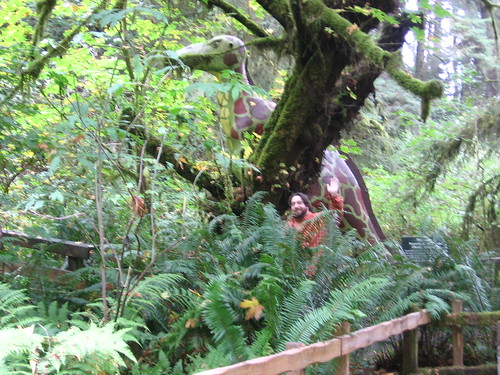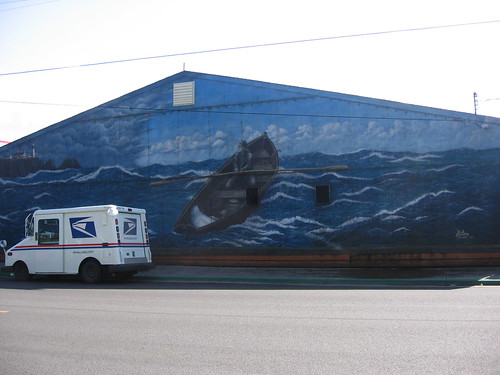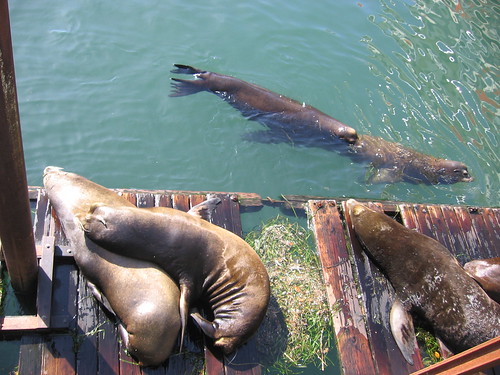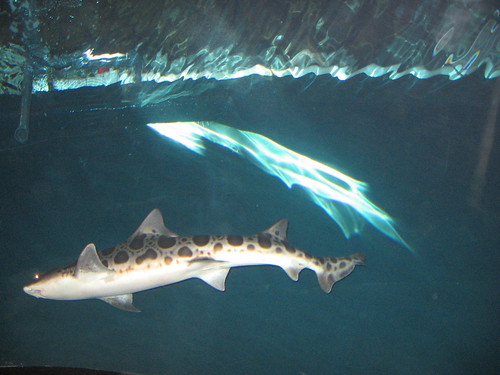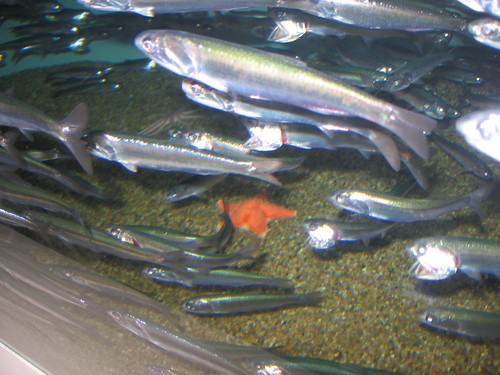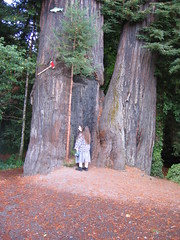Since we couldn't go to Crater Lake due to snow, we decided to give the Shasta Caverns a try. Whenever we stopped somewhere, whether a tourist spot, restaurant, or hotel, Steve would peruse the sightseeing brochures. I usually would forget about those. That's how we found out about the
Caverns. Funny thing then, looking at the website and in the brochure, I couldn't find out how many steps were involved. Could we handle that many steps? I called to find out. Funny thing now, I can't remember how many steps there were exactly. 460 some odd steps. I said to Steve I didn't think we were up for it. I can walk here there and everywhere, but going up that many stairs? Both of us have been living with fall allergies, and my asthma would easily be triggered. He disagreed. He thought we could do it. We decided if we made it there in time for the noon tour, we would go for it. That meant getting checked out, finding breakfast, and driving for about a half hour by noon.
We got there just in time. I figured, if anything the little boat trip across the lake would be nice, and I was supposing there could be a way to turn back if needed. After the boat, there was a winding bus trip up the mountain. The view up there:
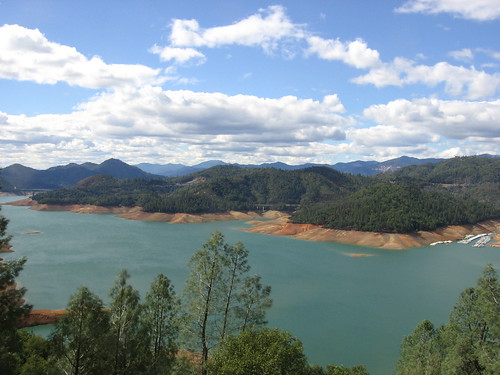
We learned a few things on the way. That marina off to the right is the second largest on the lake. The I-5 bridge that crossed over the lake is 300 feet tall, but most of that is underwater. It was built on top of the bridge already there before the lake was created.
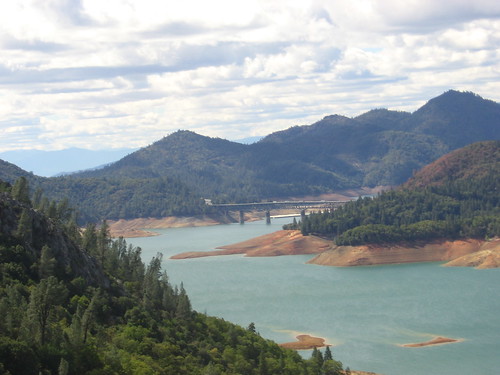
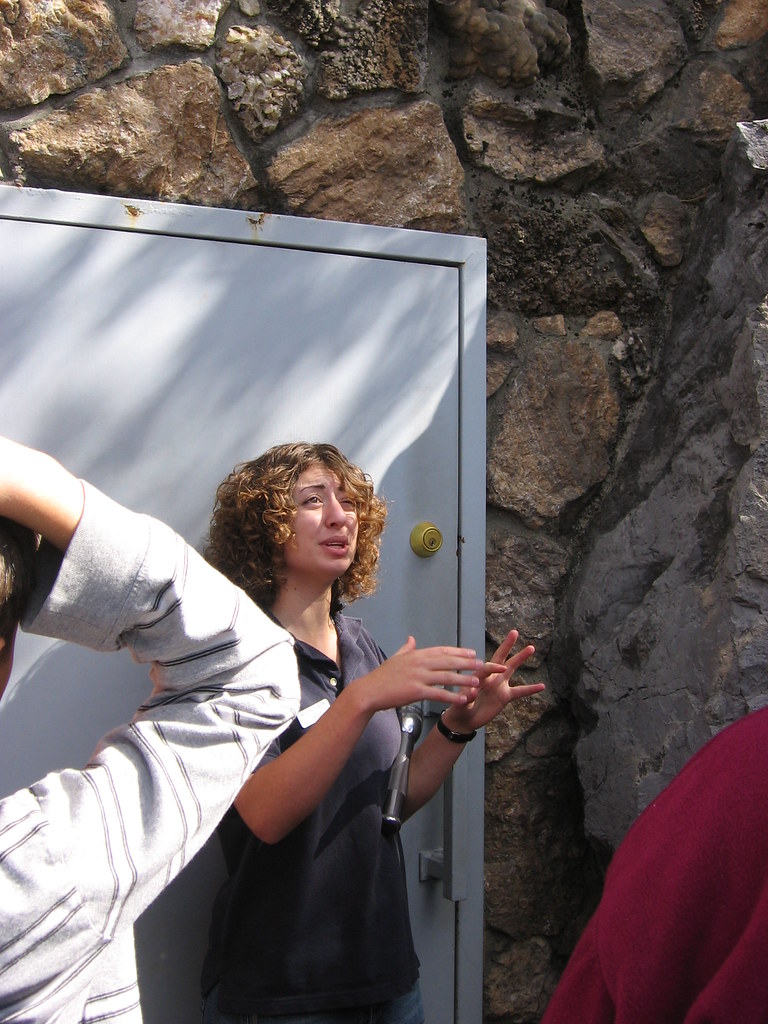
Julie, our tour guide through the caverns, informed us there were two rules. Do not touch the rock, and no food or drink allowed, except water. The rock is living rock, formed by water and minerals passing over it. If we touched it, the oil from our hands would create a seal and the rock would die in that spot.
She told us all about the different formations, many more than the familiar stalactites and stalagmites. There is peanut brittle, a rock formation found on a cave floor that looks like its namesake. It is formed when water sticks around a while, so rock forms on the surface, kind of like ice. When the water recedes, the rock settles and breaks. There are soda straws, hollow and the width of a drop of water, hanging from the ceiling. There are helictites, which go every which way. When stalactites fill in next to each other they become draperies. Draperies become flowstone. The caverns website has more description in a handout for teachers
here.
These draperies sparkled.
As it turned out we didn't do too badly. There were a few other people for whom the many stairs were at least as difficult as for me. The first big flight was 50 steps, and the longest 80 steps. After the 50 we were given the option of taking the shortcut back down and waiting for the group. No one took it, not even the lady with a cane who had braces of some type, or perhaps even prosthetic feet. We all wanted to see all the caves. It helped that I used my inhaler as a precaution.
The original explorers did touch the rock. It was tradition back then. They used carbon from their lamps and left their initials with their fingers.
That's Nobember 11, 1878.
I was very happy we did it, nonetheless, I saw this with relief and a feeling of accomplishment.
Lake Shasta was particularly low. The tour company had created a road that led at least a quarter mile into the lake bed from the original shoreline. They took us down to the boat in a shuttle.
After the caverns it was time to go home. We were ready, even if it meant an 8 hour drive.
Along the way I would snap pictures from the car. At first Steve thought that was pointless, that I couldn't get any good photos from a moving vehicle. I told him sometimes I was surprised. Sometimes it allowed me to see something my eyes didn't catch. Ah, the advantages of the digital age. If you snap enough times, something works out just right. There were a couple things I saw but did not capture that I especially liked. A couple of cow sculptures, made from scrap metal, and a dragon, also from metal, perhaps at the other end of the same ranch. Steve saw the dragon and pointed for me. At the time I was listening to
Dragon Rider by Cornelia Funke and marveling at the sexy voice, wondering who that was who could jump from southern to western to english to scottish accents in a breath. While the metal dragon in the book was bad and the silver dragon good, I feel sure that this metal dragon is good. More on that later. Oh wait,
here are the cows. And that gave me the clue on finding the dragon.
Here it is.
One thing I noticed about snapping pictures, the mountains seem to stand still while the foreground constantly changes.
If you have doubts about the walking of mountains it means you do not yet know the walking of your own self. It is not that your self does not walk, but that you do not yet know, have not made clear its walking. And those who would know their own walking must also know the walking of the blue mountains. ~Dogen, Mountains and Rivers Sutra
See the full slideshow
here.



